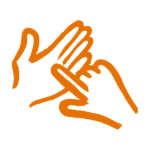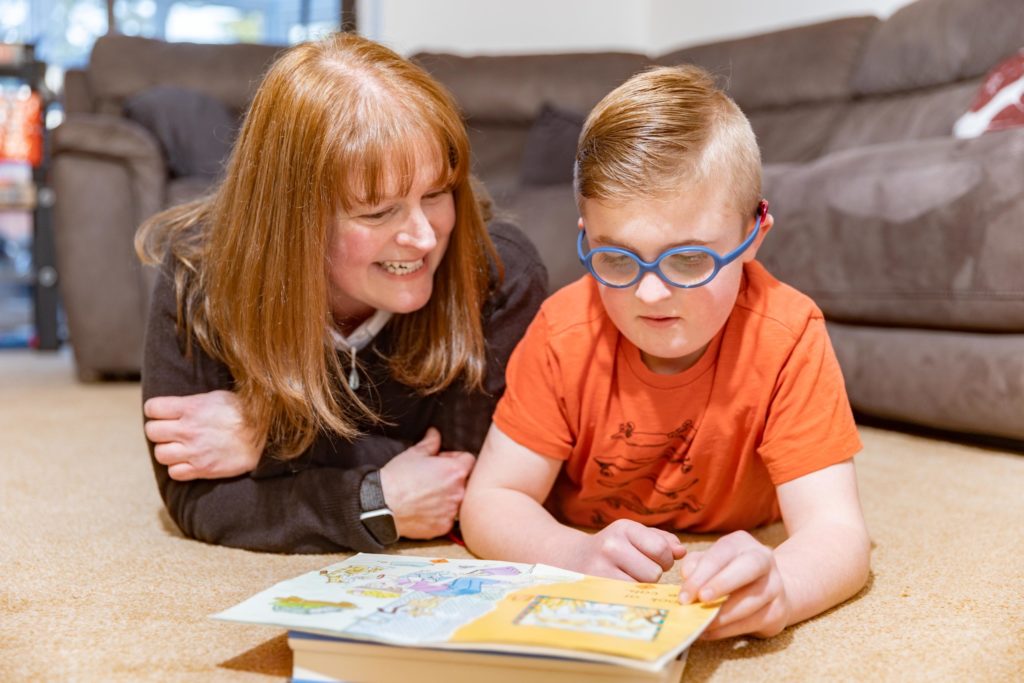Tadoma
This page explains a way of lipreading called Tadoma, who uses it and how to learn it.
What is Tadoma?
Tadoma is a way to understand what someone is saying by touch. This is why it is also known as “tactile lipreading”.
You place your thumb on the speaker’s lips, your three middle fingers along the jawline and your little finger on the throat.
You understand what the speaker is saying through motions of the jaw, facial movements and vibrations in the vocal cords in the throat.
You can also tell when the speaker is saying letters such as N and M because the speaker puffs their cheeks and produces warm air.
Tadoma can be used together with Deafblind Manual or block alphabet. You do this by using the Tadoma method with one hand, and your other hand to feel the speaker spell out the same words or letters.
Sign up to our newsletter
Find out more about communication methods and read inspiring stories about the people that use them.
Who uses Tadoma?
Tadoma was invented for people who are deafblind. This means you have little or no sight or hearing.
If you are losing your hearing, you can use Tadoma to help keep the speech skills you had before becoming deaf.
Highly skilled Tadoma users can follow speech at near listening rates, but most Tadoma users are much slower.
Before you read on…
- You can communicate using a mix of different ways. (We all do!)
- At Sense, we use whatever combination of speech, touch, sign or visual language works best.
- It’s never too late to start.
- Have a go and don’t worry about getting it wrong.
How can I start to learn Tadoma?
Tadoma takes years of training and practice, so it’s a slower learning process.
Tadoma is not easy to learn and not always accurate. Also, because you have to be in direct physical contact with the person you’re speaking to, its use can be limited.
Ultimately, you may find these other methods easier to learn and more useful:
Interesting fact about Tadoma
The Tadoma method was invented and developed by American teacher Sophie Alcorn at the Perkins School for the Blind in Massachusetts. The method is named after the first two children to learn it: Winthrop “Tad” Chapman and Oma Simpson.
How Sense can help
We offer free and impartial information about living with complex disabilities, including deafblindness.
We also offer services all over the UK, including day services, community support and residential care. Talk to our team to find out more.
Get in touch by phone, email, post or through a BSL interpreter.
Types of communication
These are the main ways of communicating that we use:
-

Using touch
- Braille uses raised dots to touch.
- Deafblind Manual spells words on to your hand.
- Block alphabet spells letters on to your hand.
- Moon uses raised lines, curves and dots to touch.
- Hand-under-hand signing using touch.
-

Using signs
- Sign language.
- Makaton, a simpler version of sign language.
- Visual frame signing for people with reduced vision.
- Objects of reference.
-

Using speech
-

Also
- Non-formal communication without speaking, writing or signing.
- Intensive interaction treating everything as communication.
Stay in touch

Get updates about our vital work, including volunteering, making a donation or supporting Sense campaigns.
This content was last reviewed in April 2023. We’ll review it again in 2025.
